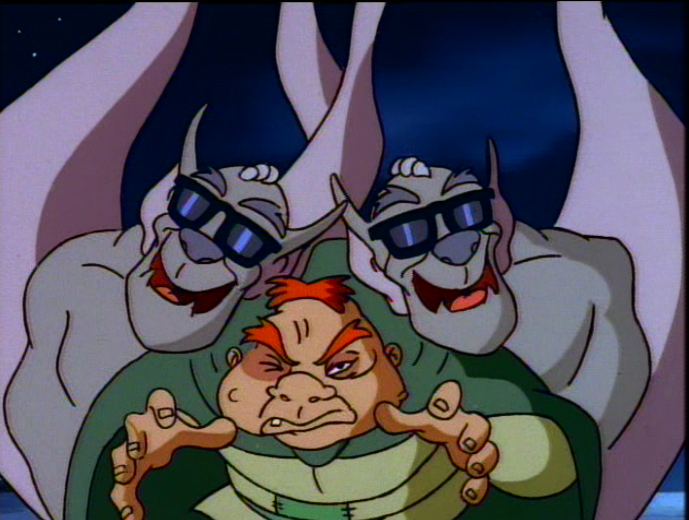The Bechdel test is a litmus test used to identify gender bias in fiction but its main application is for movies. The test was named after Alison Bechdel for her 1985 comic strip, Dykes to Watch Out for. Passing or failing the Bechdel test does not indicate the quality of the movie, a great movie will fail and a terrible movie will pass.
To pass the Bechdel test a work needs to meet 3 criteria; 1) It has to have at least two named female characters, 2) That talk to each other 3) About something other than a male. Though some people thinks the duration of the conversation should be at least a minute. Most movies fail the Bechdel test.

Esmeralda and Sister Gudule by Benjamin Lacombe from Notre Dame de Paris Tome 2
Most versions of the Hunchback fail the Bechdel test because there is typically only one to three named women in the movie; Esmeralda, Fleur de Lys, and Madame de Gondelaurier (given name Aloyse) and they never speak to one another in a conversion. Interestingly enough the novel passes as Esmeralda and her mother, Sister Gudule, (a.k.a Paquette Guybertaut, a.k.a. “La Chantefleurie” {talk about being named}) have a conversation about their identities. .
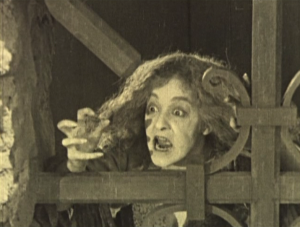
Gudule (Gladys Brockwell) Hunchback of Notre Dame 1923
With exclusion of Sister Gudule’s character the story loses its overall female presence. Only three works maintain Gudule (or the mother figure) has a character; the 1923 version, the awful Enchanted tales version, and the abysmal Dingo version.

Marie; Queen of the Gypsies (Eulalie Jenson) Hunchback of Notre Dame 1923
The 1923 version, out of all the Hunchback versions has the biggest female presence as it has five named females; Esmeralda, Madame de Gondelaurier, Fleur de Lys, Sister Gudule and Marie. Esmeralda, Marie and Sister Gudule have a scene where they sort of converse and Esmeralda and Marie have a conversation in another scene but it’s very unclear what it’s about. Fleur de Lys and Madame de Gondelaurier are always in scenes with Phoebus and they never really converse with other. But the scene with Marie, Esmeralda and Gudule would give it a pass for Bechdel test.
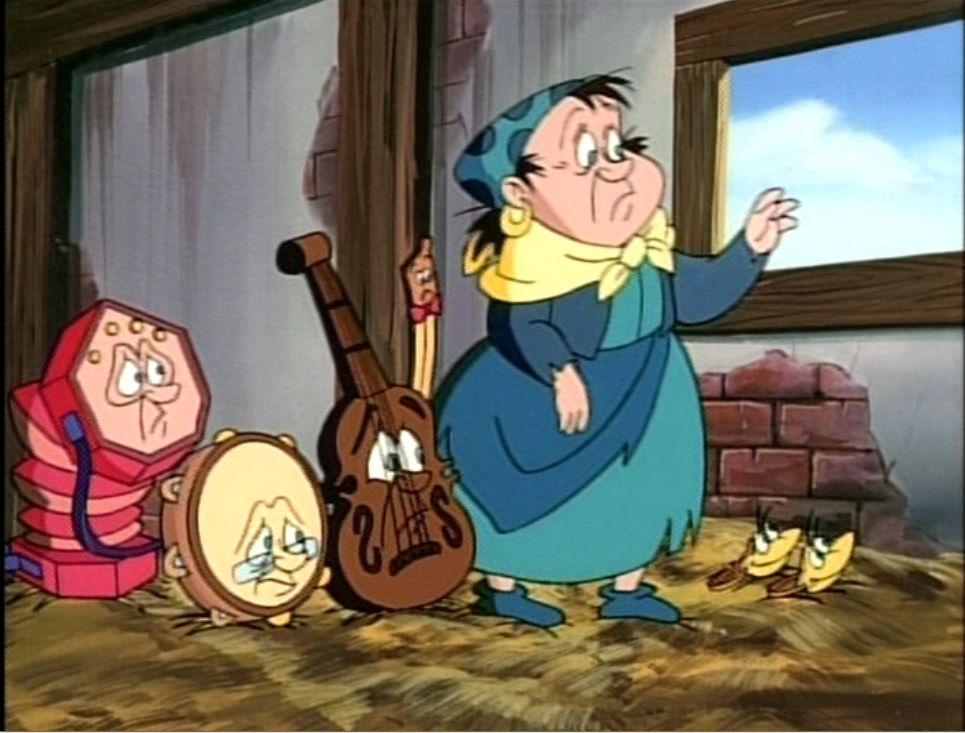
Genevieve with the Annoying Instruments, Enchanted Tales Hunchback of Notre Dame
The Enchanted tales version has Melody (Esmeralda) and her mother, Genevieve but they don’t have an conversation with each other plus those annoying instruments are in the way. So it doesn’t pass.
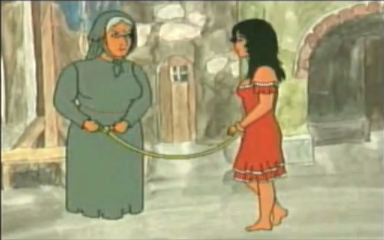
Esmeralda and her mother, Dingo Hunchback of Notre Dame
The Dingo version for all its badness does have Esmeralda and Sister Gudule speaking to each other about who there are so it sort of gets a pass and sort of fails because Sister Gudule isn’t referred to by name it only if you make the connection to the book that you know her name. Though this could be an oversight in the dub.

Helene Whitney as Fleur de Lys, 1939 Hunchback of Notre Dame
The other Hunchback movies fail. In the 1939 version it’s really only Esmeralda. Fleur de Lys is a featured extra that is mentioned by name but they share no dialogue with other.
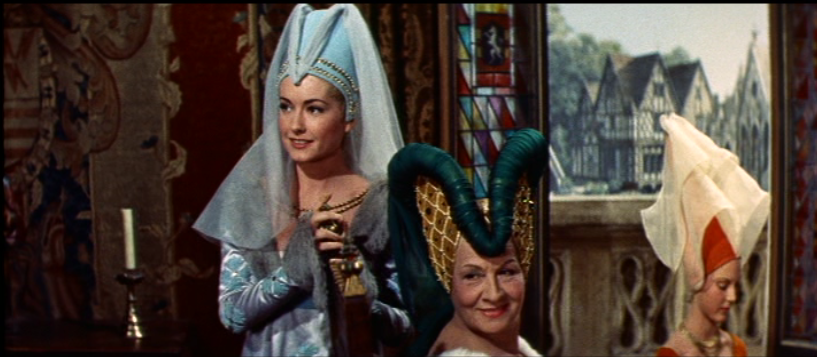
Danielle Dumont as Fleur de Lys, 1956 Hunchback of Notre dame
In the 1956 version there is Esmeralda, Aloyse de Gondelaurier, and Fleur de Lys. Aloyse de Gondelaurier, and Fleur de Lys only shared dialogue is about Phoebus and Madame de Gondelaurier’s husband.

Hetty Baynes as Fleur de Lys, Ruth Goring as Madame de Gondelaurier, and Richard Morant as Phoebus, 1977 Hunchback of Notre Dame
The 1977 has Fleur de Lys and Madame Gondelaurier but Phoebus is in all their scenes.
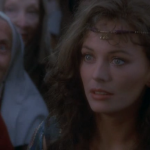
Lesley-Anne Down as Esmeralda, 1982 Hunchback of Notre Dame
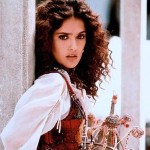
Salma Hayek as Esmeralda, 1997 Hunchback of Notre Dame
The 1982 and the 1997 version only really have Esmeralda as the only female character.
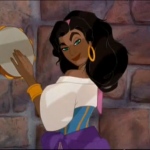
Esmeralda, Disney Hunchback of Notre Dame

Laverne Guy like you Disney Hunchback of Notre Dame

Madeline Hunchback of Notre Dame II Disney
The Disney version has two named females; Esmeralda and Laverne and they never speak to each other. This goes for Der Glöckner von Notre Dame as well. As for the Disney sequel we get three females with the addition of Madeline. However none of these characters speak to each other. 3 Fails.
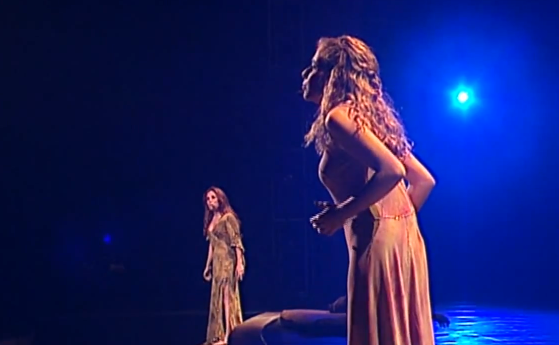
Juie Zenatti as Fleur de Lys & Helene Segara as Esmeralda, Notre Dame de Paris Original Cast
The musical Notre Dame de Paris has Esmeralda and Fleur de Lys and while they share a song Beau Comme Le Soleil it’s clear that they singing isolation and it’s very much about Phoebus. So it fails.

Mélanie Thierry as Esmeralda/Agnes and Axelle Abbadie as Mme Le Gouverneur, Quasimodo d’el Paris
The parody version Quasimodo d’El Paris has a few named females characters Esmeralda/Agnes, Mme Le Gouverneur (if that counts as a name), Gudule, and Mme Jackson. They don’t really have a conversation with each other. Esmeralda and Mme Le Gouverneur exchange a line of dialogue before it shifts to a man. Fail

Illustration Sister Gudule and Esmeralda by Luc Oliver Merson
The point of The Bechdel test isn’t to pass or fail, its point is to show the overall presence of females in media and how integral they are to the story but it mainly shows gender bias. The Hunchback is at a core a story of how one women impacts men, so by its very concept it has to have more males. However even though it’s a story that center around a women it’s still a male driven story. With Sister Gudule there is a more female presence and the exclusion of character from the majority of the retellings does pretty much kills female presence in the story.


